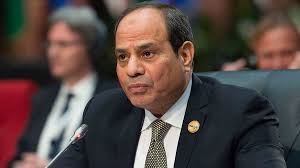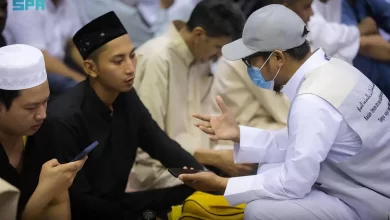
Reported by: Ahmed Mostafa
The BRICS group, comprising Brazil, Russia, India, China, and South Africa, has solidified its position as a major player in the global economy and politics in 2024. The formation of the BRICS Union, a formal alliance, aims to deepen economic cooperation, promote trade and investment, and address global challenges. The group has completed several infrastructure and development projects, including the BRICS New Development Bank, which has funded renewable energy, transportation, and digital infrastructure.
BRICS has also taken steps towards multilateralism and global governance, supporting the United Nations’ efforts to address climate change and achieve the Sustainable Development Goals. Total trade among member countries reached an all-time high, with China, India, and Russia as top trading partners. The BRICS Science, Technology, and Innovation Partnership Programme aims to promote cooperation in research, technology transfer, and innovation.
Among the most important developments that have occurred and will occur later in 2024 are what we will present below:
BRICS in 2024 bets more on youth and innovation
The BRICS partnership, which accounts for over 40% of the global population and 38% of its GDP, is shifting its focus towards youth and innovation. With over 60% of the BRICS population under 35, it is crucial to harness their energy, ideas, and potential for the progress and development of member nations. At the 12th BRICS Summit in 2019, leaders identified youth as one of the key pillars for future cooperation.
Investing in youth and fostering innovation is vital for the economic growth and stability of the BRICS nations. As the world moves towards a digital and knowledge-based economy, the need for skilled and innovative young minds increases. The BRICS nations are committed to providing quality education and training to their youth, promoting STEM education, encouraging entrepreneurship, and supporting research and development.
The BRICS Innovation Co-Creation Base, established in China in 2017, aims to promote cooperation in innovation by supporting startups, facilitating technology transfer, and promoting joint research and development projects among member countries. The BRICS Network University, founded in 2015, promotes academic collaboration and joint research in various fields.
The BRICS nations are also working towards creating a supportive ecosystem for startups and young entrepreneurs, bridging the digital divide, and strengthening cooperation and people-to-people ties among member countries through youth forums, cultural exchanges, and youth-driven initiatives.
South Africa to Explore Stablecoin Development in 2024
South Africa is conducting research into stablecoin development within the country as part of its work with the BRICS economic alliance. The national Intergovernmental Fintech Working Group will analyze the use cases of stablecoins and make regulatory recommendations. The research will continue throughout 2024, and the group is also exploring the potential impact of tokenization on domestic markets. They plan to publish a paper on the regulatory implications of tokenization by the end of the year.
The BRICS economic alliance, which includes South Africa, has been a dominant force in global discourse, with plans for de-dollarization as well as expansion. South Africa is now entering the stablecoin development space, establishing a new regime to research this asset class and investigate the implications of tokenization on financial market infrastructure. This move aligns with the country’s growing digital asset sector and its position in the economy. South Africa has already begun registering crypto asset service providers and recognizing crypto as a financial product.
Digital asset development is not new to the BRICS bloc, as seen in China’s success with its digital yuan. Each country within the alliance will likely approach technological advancements in digital assets in its way. Speculation suggests that the BRICS currency could be built on blockchain technology, making these developments crucial for participating economies. Observing their progress throughout the year will be important.
South Africa might leave the coalition amid a policy shift
South Africa may leave the BRICS economic alliance due to a potential foreign policy shift, according to the country’s ambassador to Russia, Mzvukile Jeff Maqetuka. He expressed concerns that upcoming elections could have significant implications for South Africa’s future in BRICS, citing a possible parallel with Argentina’s rejection of its BRICS invitation.
The BRICS alliance has experienced impressive growth in recent years, and with its expansion plan and de-dollarization efforts gaining momentum globally, it seemed to be on an upward trajectory. However, if opposition parties win the upcoming election, South Africa may reconsider its foreign alliances and potentially leave BRICS, similar to Argentina’s rejection after a regime change.
South Africa, which joined the BRICS group in 2001 as its first official expansion country, holds a crucial position within the alliance’s plans. The South African presidential elections are scheduled for May 29th, 2024. Maqetuka believes that if the African National Congress (ANC) is re-elected, the status quo for the nation and the bloc will be maintained. However, a regime change to the Democratic Alliance could lead to policy restructuring, particularly regarding South Africa’s relationship with Russia.
The implications of South Africa’s potential departure from BRICS would undoubtedly be significant for the collective. As one of the alliance’s key members, its exit could disrupt the bloc’s growth and influence. The outcome of the South African elections will be crucial in determining the future direction of the country’s foreign policy and its involvement in BRICS.
BRICS will include new countries in 2024
BRICS has confirmed that new countries will be joining the alliance in 2024, following a similar expansion that took place in 2023. Saudi Arabia, the UAE, Iran, Egypt, and Ethiopia were the first batch of countries to join the expanded alliance. The growth in numbers is crucial for BRICS’ ongoing de-dollarization efforts and continued commitments.
South Africa’s ambassador stated that the question of BRICS expansion is already given, and they have been spearheading coordinated expansion as the chairman. A framework for expansion is necessary as it had not been a part of the alliance before. South Africa’s work in establishing this framework should simplify further expansion. The five incoming nations will be present at the October summit as full members with voting rights.
The alliance is likely to follow a similar tactic as in 2023 by inviting six nations that meet its criteria to join. Although the qualifying nations are currently unknown, there is no shortage of interested countries at this point. The world awaits further growth for the collective as BRICS continues to solidify its position as an influential geopolitical alliance.
BRICS controls 37% of global GDP, while the West will fall to less than 28%
BRICS, currently consisting of Brazil, Russia, India, China, and South Africa, has expanded to include the UAE, Egypt, Iran, and Ethiopia. Saudi Arabia has been invited to join but has not yet decided. If Saudi Arabia joins, it will strengthen BRICS and increase control over global oil supply and GDP. President Vladimir Putin predicts that by 2028, BRICS could control 37% of the world’s GDP, surpassing the G7 bloc of Western countries.
This shift would empower developing countries and decrease the influence of the West on the global economy. The economies of BRICS countries are experiencing rapid growth, with India’s GDP projected to surpass Germany’s shortly. With an annual growth rate of 7%, India could become the world’s third-largest economy, surpassing Germany and Japan. India has already overtaken the UK in terms of GDP growth.
The collapse of the US dollar strongly supports the BRICS’ new financial system
The US national debt is growing at an alarming rate, increasing by $1 trillion every 100 days since 2023. This uncontrolled debt poses a significant threat, not only to the US but to the global economy. Countries like BRICS and other developing nations are concerned that the US dollar debt could cause their economies to crash. Holding US dollars in reserves is now considered a risk, as it could undermine years of financial stability.
The US national debt has reached a staggering $34.4 trillion, and efforts by elected representatives and Federal Reserve officials to control it have been ineffective. Bank of America has warned about a potential collapse of the US dollar, opening the door for BRICS to push for de-dollarization worldwide.
A weakening US dollar allows BRICS to lead other developing countries in the de-dollarization movement. Experts have warned that if the debt continues to grow out of control, the US dollar’s collapse is inevitable. In response, BRICS is preparing for a possible decline of the US dollar and may introduce a new currency to the global market.
The BRICS group plans to develop a payment system based on blockchain and digital technologies. Creating an independent BRICS payment system is seen as an important goal for the future, emphasizing convenience, cost-effectiveness, and non-political nature. This initiative aligns with efforts to reduce reliance on the US dollar, known as de-dollarization.
Additionally, the Contingent Reserve Arrangement will be developed, focusing on the utilization of currencies other than the US dollar. As part of this endeavor, Russia’s Finance Ministry, the Bank of Russia, and BRICS partners will establish the BRICS Bridge multisided payment platform to enhance the global monetary system. Furthermore, the Chair of the Financial Stability Board emphasized the significance of crypto assets, tokenization, and artificial intelligence in a letter to the finance ministers of the G20 countries.




